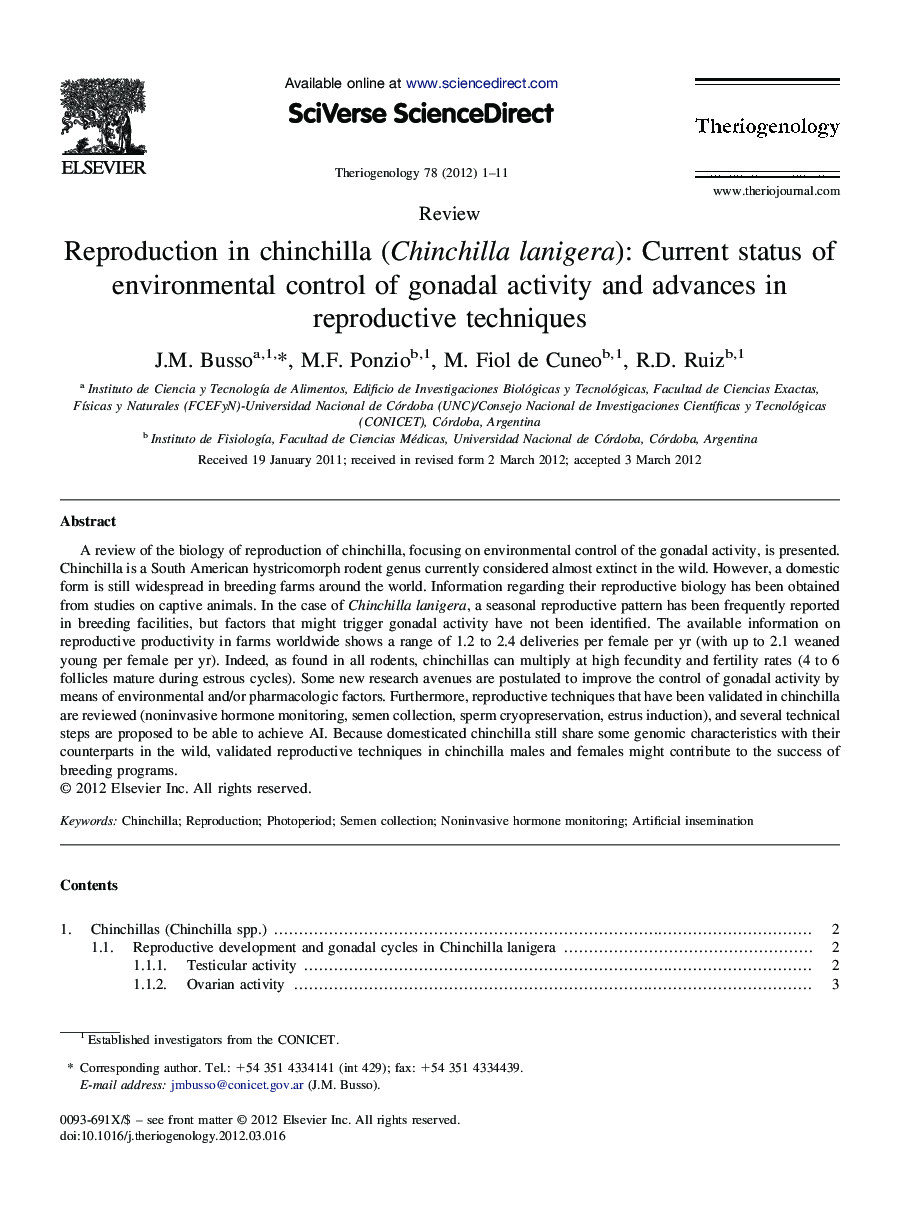| کد مقاله | کد نشریه | سال انتشار | مقاله انگلیسی | نسخه تمام متن |
|---|---|---|---|---|
| 2097684 | 1082477 | 2012 | 11 صفحه PDF | دانلود رایگان |

A review of the biology of reproduction of chinchilla, focusing on environmental control of the gonadal activity, is presented. Chinchilla is a South American hystricomorph rodent genus currently considered almost extinct in the wild. However, a domestic form is still widespread in breeding farms around the world. Information regarding their reproductive biology has been obtained from studies on captive animals. In the case of Chinchilla lanigera, a seasonal reproductive pattern has been frequently reported in breeding facilities, but factors that might trigger gonadal activity have not been identified. The available information on reproductive productivity in farms worldwide shows a range of 1.2 to 2.4 deliveries per female per yr (with up to 2.1 weaned young per female per yr). Indeed, as found in all rodents, chinchillas can multiply at high fecundity and fertility rates (4 to 6 follicles mature during estrous cycles). Some new research avenues are postulated to improve the control of gonadal activity by means of environmental and/or pharmacologic factors. Furthermore, reproductive techniques that have been validated in chinchilla are reviewed (noninvasive hormone monitoring, semen collection, sperm cryopreservation, estrus induction), and several technical steps are proposed to be able to achieve AI. Because domesticated chinchilla still share some genomic characteristics with their counterparts in the wild, validated reproductive techniques in chinchilla males and females might contribute to the success of breeding programs.
Journal: Theriogenology - Volume 78, Issue 1, 1 July 2012, Pages 1–11